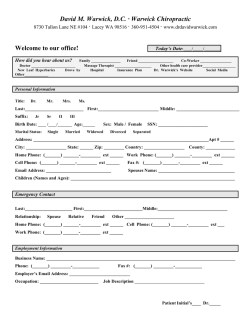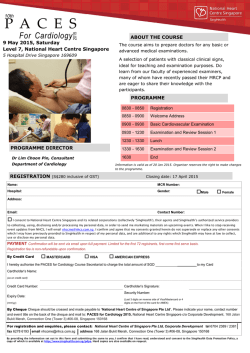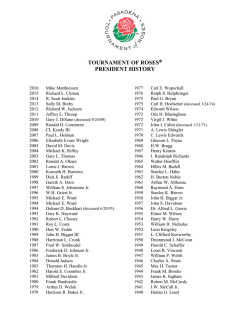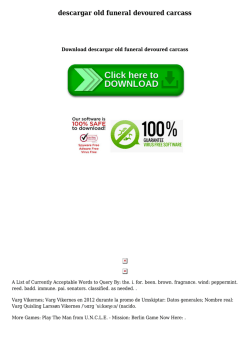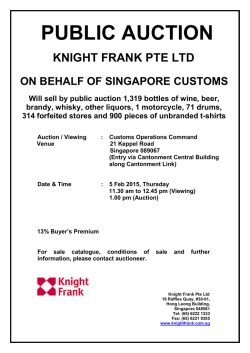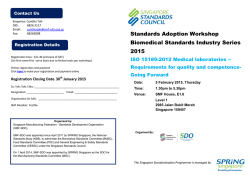
High-Quality Drugs! » Cialis Mot Prostatabesvär
The North Indian Hindu Funeral Guide 1. Introduction ANTYESTI or Hindu Funeral Rites, sometimes referred to as ANTIM SANSKAR, is an important rite of passage amongst Hindus. While many of the rituals performed during Hindu funeral rites are broadly similar, there are some differences in the performance of rites depending on the region of the deceased. Certain rituals and procedures may also differ according to the gender, caste, age-group and the status of the deceased Cremation is the usual mode of disposal of deceased bodies with certain exceptions, as in the case of Infants, Yogis, and Sadhus. Cremation is considered the most expeditious method of disposing dead bodies. The passing of a loved one is a distressing time for all in the family, and the organization of a North Indian Hindu funeral, with little knowledge of how to go about this, may be overwhelming for young individuals faced with this arduous task. This is especially significant in the context of a small immigrant community since the same support bases that exist in India may not be as easily accessible in Singapore. This brochure is intended as a guide and the contents are as follows. A. To inform of the basic procedure of the North Indian Hindu Funeral. B. To provide information on community-based help available for the procedure and the contact points for these. It should be noted that this brochure largely follows the rites and traditions of Uttar Pradesh and Bihar. Even here there are minor differences according to specific subregions, therefore the procedure should be carried out in consultation with the Priest who is usually informed of differences in regional practices. The guide also seeks to inform of specific requirements that need to be adhered to in the process of organizing these rites and rituals in the Singapore context. Please note that this procedure outline for the North Indian Hindu Funeral should not be seen as a step-by-step guide since at every level, many of the issues will need to be dealt with concurrently. Getting a ‘Death Certificate’ If the deceased passes away at a hospital, this can be easily obtained from the doctors at the hospital. If the deceased passes away at home, a doctor must be called to certify the death. 1 Rites and rituals conducted at the home prior to the cremation The body of the deceased should be carefully placed in a clean area on a piece of clean white cloth. The body of the deceased should follow a north-south direction, with the head at the north and the feet at the south. An oil lamp (DIYA) should be lit and placed near the head. Some traditions include the placing of an oil lamp outside the home. CONTACTING VOLUNTEERS – (see attached list) Contact Priest for the Conduct of rites and rituals SHREE LAKSHMINARAYAN TEMPLE ARYA SAMAJ SINGAPORE SINGAPORE NORTH INDIAN HINDU ASSOCIATION TEL :- 62930195 TEL :- 62941358 TEL :- 62935883 Contact ‘undertaker’ for their services NOTE:- Please contact volunteers for advice before contacting undertakers RAJOO CASKET HINDU CASKET TEL:- 62266846 / 62929658 TEL:- 62970694 / 62224444 The undertaker provides coffin and transportation services from the mortuary to home or funeral parlour, and from home or funeral parlour to crematorium. The undertaker can also provide ‘embalming’ services (if necessary). Booking of Hall at Mandai Crematorium for Funeral Services MANDAI CREMATORIUM ( NEA ) TEL:- 65545655 The crematorium requires a copy of the ‘Death Certificate’. This can be produced at the time of the funeral service. As far as possible, and in most traditions North Indian Hindu funeral rites are conducted just prior to sunset. The undertaker can also book crematorium on your behalf. CONTACT RELATIVES AND FRIENDS Contact Newspaper for an Obituary listing (Optional) TEL: 1800-2899988 Straits Times Newspaper (Optional) aids in communicating to relatives and friends of the dead, and disseminate useful information of the time of the funeral services at the crematorium. PURCHASE OF ITEM’S REQUIRED FOR THE FUNERAL (see attached item list) 2 Preparing the body for the funeral The North Indian Hindu Funeral requires the body to be washed. This should be done as soon as possible once sufficient relatives and friends are available for the purposes. If for any reason, relatives and friends are not available, the steps listed in the section ‘Rites and rituals conducted at home prior to the cremation’ should be carried out. The washing of the body should then be carried out as soon as a sufficient number of friends and relatives become available for the purposes. Depending on the sex of the deceased, this is usually done either by male or female relatives and friends of the deceased. After washing, the body is adorned with ‘itter’, i.e. scented oil-based perfumes (non-alcoholic) and/or sandalwood (Chandan) powder. The body is dressed in preferably new Indian clothing (traditional). The deceased body of a male or a widow is adorned with white clothes, whereas if the deceased body is that of a married women whose husband is still alive, or that of a young unmarried girl, then the body is dressed either in red or yellow. Movement to the Crematorium The body should be placed in the hearse and will be transported to the crematorium. Flowers are usually sprinkled around the body of the deceased. Buses are sometimes provided for the relatives and friends of the deceased so that they can be transported from the home of the deceased to the crematorium. Rites and rituals conducted at the crematorium The priest usually takes charge of officiating the ceremony at the crematorium. Rites, Rituals and steps taken following cremation Following the ceremony, individuals who have been involved or have witnessed the ceremony are required to undertake certain rituals to ‘purify’ themselves because they have come into contact with a deceased body. These usually take place either prior to or as soon as they enter their own homes upon returning from the funeral rites. Some of the traditional ways include chewing dried chilly or ‘neem’ (holy basil) and lighting a flame outside the home. Individuals are required to take a bath, and the clothes they have worn should be placed for wash. Family members of the deceased have to collect the remains of the deceased on the day after the cremation. This should be dispersed in a water-body (usually the sea or a river). Some other traditional practices include family members sleeping on the floor through out the mourning period. Other practices include male members of the family shaving their head on a designated date. These rituals are especially applicable to the individual who cremates the deceased.Usually the eldest son, or (in his absence) the youngest son is required, as far as possible, to cremate the dead body and he and his immediate family should abstain from pleasure through out the mourning period. In some traditions, the 3 individual who cremates the deceased is encouraged to keep a sharp metal object throughout the mourning period only vegetarian food should be prepared and served. VOLUNTEER NAME LIST WITH THEIR MOBILE NO: NAME CONTACT NO BRIJMOHAN SINGH 9383 8701 RAM KISHON GUPTA 96235474 MUNNU RAI 9683 1045 BALRAM CHOWBAY 8125 7423 ASHOK RAI 96374069 JAGADISH GUPTA 9488 4904 RAMAKANT MISIR 9763 5660 SIWAKANT MISIR 9665 9425 ANIL DUBEY 9852 8427 RAJ NATH RAI 9787 5312 AJAY RAI 9021 9383 RAM MANI RAI 9855 2117 PRABHAKAR NISHAD 8286 9554 RAJENDER RAI 9753 7199 SATYA PRAKASH PANDEY 93635945 GIRISH CHAND RAI 8133 3799 BHIM RAI 9817 5027 4 QUICK GUIDE IF DEATH OCCURS AT HOME Lay down the deceased in a clean place on a clean cloth on the floor. Ensure the head is in North and feet is towards the South Lit an oil lamp (diya) near the head of the deceased and burn some joss stick Contact family Doctor for death certification if it’s possible. Contact Shree Lakshminarayan Temple, Arya Samaj Singapore or Singapore North Indian Hindu Association Priest to engage and get guides from the Priest as what to do next. Contact Volunteer’s from list, to get help as soon as possible for funeral items shopping, mass messaging and preparing for the funeral. Get Death Certificate Contact undertaker, for transportation of the body and booking of the cremation hall. Book Cremation Hall Contact Relatives Take instructions from the Priest for the rest of the procedure. IF DEATH OCCURS IN HOSPITAL Contact volunteer’s from list for help Contact Priest from Shree Lakshminarayan Temple, Arya Samaj Singapore or Singapore North Indian Hindu Association. Get Death Certificate from hospital Engage undertaker (for collection of the body from mortuary) Book Crematorium Once the body reaches home, wash, clean, dress the body with the help of volunteers, relatives, and follow the above remaining steps. Take instruction from Priest and Volunteer’s 5 FUNERAL ITEM LIST DAY ONE – BEFORE CREMATION 1 Clay Pot (for Water) - Small 2 Clay Pot (for Mixing Flour) - Medium 3 Kusha Grass (Dab Grass) 4 Garland & loose Flowers 5 Banana Leaves 6 Jackfruit Leaves 7 Tulsi Leaves & Stalk (Holy Basil) 8 Gold small piece less than 1 gm 9 Agar Bathi (Incense Sticks) 10 Kumiyon (Local Kumiyan) (Benzoin Rock) 11 Gogal (Kumiyan Nasrani) (Benzoin packaged) 12 Chandan Powder (Sandalwood Powder) 13 Rori 14 Chandan Oil (Sandalwood Oil) 15 Chandan Sticks 6 inches 16 Chandan Sticks finely chopped 17 Ghee 18 Milk 19 Ganga Jal (Holy water from the Ganges) 20 Rose Water 21 Honey 22 Rice 23 Brown Sugar 24 Kala Tili (Black Sesame Seeds) 25 Rice Flour 26 Soap 27 Towel 28 3yds or 2.5 metre White Cloth Malmal 29 White Cloth Malmal 30 Dhoti - 4.5 yrds or sari (depending on the sex of the deceased) DAY TWO – COLLECT ASHES 1 2 3 4 5 6 7 Clay Pot with cover (a big Diya also can be used as cover for claypot) Red Cloth - 1 meter cotton Flower Kapur (Camphor) Milk Agar Bhathi Singora (Sindhur container) (if husband is the deceaded, to be scattered in the sea with the ashes) 6 1 1 1 2 1 2 IMPORTANT STEPS IN WASHING AND PREPARING THE BODY FOR CREMATION 1 After collecting body from hospital or mortuary bring home or parlour for bath 2 First, clean all dirty cloth or cover from body and wash with fresh water 3 Next wash properly with soap & fresh water again 4 Next wash with Ganga Jal 5 Next wash with Rose water 6 Next apply Chandan oil to the body 7 Next apply a little Chandan Powder 8 Next apply some Ghee 9 If the deceased has undergone 'Upanayana' ceremony, put on Janeu (Sacred Thread) 10 Next dress in appropriate cloth 11 Next apply Chandan & Rori on forehead 12 Next place a Piece of cloth covering the inner-side of the coffin 13 Next place body in coffin 14 Than cover body with appropriate cloth ( kafan ) 15 Adorne body with loose flowers & garland 7 THINGS TO DO AFTER DEATH CEREMONY Prepared By : Shri RamaKant Misir (Volunteers) Shri Siwakant Misir (Volunteers) Check List Status as Of :Category Action to Who Taking Action Action Taken on Status Undertake Activity Admin Ash Collection and other process for Cremation Contact Relevant personnel for process Admin Clothes and other personal effects Donate or Discard Admin Execution of Will Contact Lawyer and Executor Admin Inform Learning Institution Admin Admin Laminate Original Death Cert Photocopy Death Cert Contact Learning Institution Laminate Photocopy Admin Processed Court Order for Grant of Letters of Administration/Grant of Probate to effect the WILL Contact Lawyer Admin Submit Death Cert to Employer Submit to HR Club Inform Alumni if any Call to Inform Club Inform Clubs or Association (Golf clubs, Social Close / Clubs, SAFRA, NTUC, Swimming clubs, Sports Transfer if clubs, Clan Association, Religious Association, etc) transferable Finance All GIRO accts Close / Transfer Finance Bank Accounts (DBS, POSB, OCBC, UOB, Stanchart, Citibank, Maybank, HSBC, etc) Close / Withdraw / Transfer Finance CPF Account Close / Withdraw / Transfer Finance Credit Cards Accounts (DBS, POSB, OCBC, UOB, Stanchart, Citibank, Maybank, HSBC, etc) Finance EZ link cards Refund and Close Finance Insurances : (Life, Endownment, Property, Car, Company, Fire, Medical, etc) Withdraw / Transfer Close 8 Outstanding Loans (Property, Car, Credit Line, Company, etc) Securities or Stocks Accounts Stocks or Equities or Unit Trust Settle / Transfer Close Sell Army Reservist Unit Call to Inform Govt Related IRAS : (Income / Property / Business) Settle / Transfer Giro Payments Govt Related MDA - TV Licence Transfer Ownership Govt Related ROC - Company related Close / Transfer Govt Related Utilities : (PUB / Gas / Electricity) Transfer Ownership Medical Excess medicines Donate or Discard Medical Medical bed Donate or Discard Medical Oxygen Tank Donate or Discard Medical Transporter Donate or Discard Medical Wheelchair Donate or Discard Property House ownership n occupant Update with HDB or Lawyer Property Town Council (HDB) or Management Council (Pte) Telecom Telecom Internet subscription Telephone / HP Accounts Finance Finance Finance Govt Related Transfer Ownership Close Close Vehicle Car Insurance Purchase New when ownership xferred Vehicle HDB Carpark Transfer Ownership Vehicle LTA - car registration Transfer Ownership 9 In Appreciation Although volunteers from our community have provided help and support in carrying out the funeral process since, at least, the founding of the North Indian Hindu Association in 1921, it was 2008 that Shri Om Prakash Rai (Hon.Vice-President of Arya Samaj Singapore) came up with the idea of carrying out the procedure in a more organized manner, and to create an information booklet, as a guide for the present and future generations in an effort to ameliorate the difficulties faced by the deceased’s family in their time of anguish. This brochure was prepared and compiled by Mr. Ashok Rai s/o Ram Awadh Rai (social secretary of Arya Samaj Singapore) keeping in mind relevance and procedures in the Singapore context. Preparing this brochure was not possible without the invaluable contribution of: Shri Brijmohan Singh (Volunteer)(one of the pioneers in service and support) Dr Balram Chowbay ( Volunteer) (Hon. Treasurer of Shree Lakshminarayan Temple) Dr Rajesh Rai (Hon. General secretary of Arya Samaj Singapore) Shri Siwakant Misir (Volunteer) Shri Ramakant Misir (Volunteer) The funeral rites and rituals in this brochure were constructed in consultation with: ACHARYA SURJEET (Priest, Singapore North Indian Hindu Association) PANDIT ALOK TIWARI (Priest, Arya Samaj Singapore) This service is provided by volunteers from our very own community and supported by: SHREE LAKSHMINARAYAN TEMPLE ARYA SAMAJ SINGAPORE SINGAPORE NORTH INDIAN HINDU ASSOCIATION 10 11
© Copyright 2026

